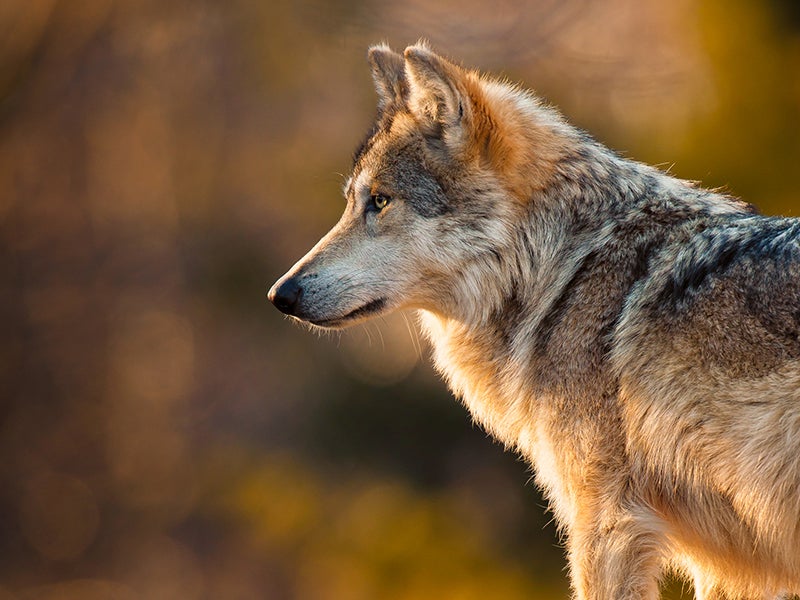Forty Years of Waiting to Save the Last Wild Lobos
Four decades after listing, the U.S. Fish and Wildlife Service will finally have to complete a plan to recover the Mexican gray wolf.

This page was published 9 years ago. Find the latest on Earthjustice’s work.
On April 28, 1976, the U.S. Fish and Wildlife Service listed the Mexican gray wolf for protection under the Endangered Species Act. The highly intelligent, social animal was once a mainstay of the American Southwest. Sadly, the decision to protect it came a little late for the lobo. The livestock industry, hunters and government agents had already all but exterminated the species in the Four Corners states. But there was still a glimmer of hope, south of the border. A few of the species remained in Mexico. So between 1977-1980, the service and its Mexican counterpart worked together to round up the last remaining wild lobos in an attempt to save the whole species.
Their efforts resulted in the capture of seven wolves. Today, all wild lobos that remain in the wild are descendants of those seven.
Today marks the 40th anniversary of the listing of Mexican gray wolves. One might think that in four decades the wolf would have bounced back. But with only 97 individuals existing in the wild at the end of 2015, and fewer than 25 in Mexico, the Mexican gray wolf remains one of the most endangered mammals in North America and faces a serious risk of extinction.
The reason the wolves have struggled to survive is that the U.S. Fish and Wildlife Service has failed to take necessary action to secure a future for the lobo. The service has time and again bowed to pressure from special interest groups and state leaders in Arizona, Colorado, Utah and New Mexico who don’t want the species reestablished within their borders. In doing so, the service has never completed a crucial and legally-required part of its duty to protect this species: It has never finalized a scientifically-sound recovery plan to serve as a blueprint for establishing a healthy, sustainable population of Mexican gray wolves in the wild.
This week, though, some good news came the lobo’s way. Earthjustice, on behalf of a coalition of conservation groups, wolf centers and a former U.S. Fish and Wildlife Service biologist, reached an agreement with the service to finalize a recovery plan by the end of 2017.
Without a recovery plan in place, the restoration of the wolf in the wild has been severely hamstrung. Illegal killing by poachers poses an ongoing threat to wolves and is difficult for authorities to track and prosecute. The legal removal of wolves due to conflicts with livestock has also reduced the population. But the biggest threat to the recovery of the species is its problem of inbreeding, due to the severely shallow gene pool.
The service’s Mexican gray wolf conservation efforts have also been hobbled by insufficient releases of captive wolves into the wild population, excessive removals of wild wolves, and arbitrary geographic restrictions on wolf occupancy of promising recovery habitat such as in the Grand Canyon ecoregion and in northern New Mexico and southern Colorado. The service in 2010 admitted that the wild Mexican gray wolf population “is not thriving” and remains “at risk of failure,” and further admitted that “failure to develop an up-to-date recovery plan results in inadequate guidance for the reintroduction and recovery effort.”
This agreement offers new hope for the lobo of southwestern lore. In its finalization of the plan, we urge the service to stay out of politics and follow the science. Give this wolf a fighting chance at survival.
Learn more about Mexican gray wolves at Earthjustice.org/lobo.
The Biodiversity Defense Program fights to reshape our relationship to lands, water, and wildlife everywhere by confronting the major drivers of the decline in nature, including habitat destruction and over-exploitation of wildlife.
Earthjustice’s Rocky Mountain office protects the region’s iconic public lands, wildlife species, and precious water resources; defends Tribes and disparately impacted communities fighting to live in a healthy environment; and works to accelerate the region’s transition to 100% clean energy.